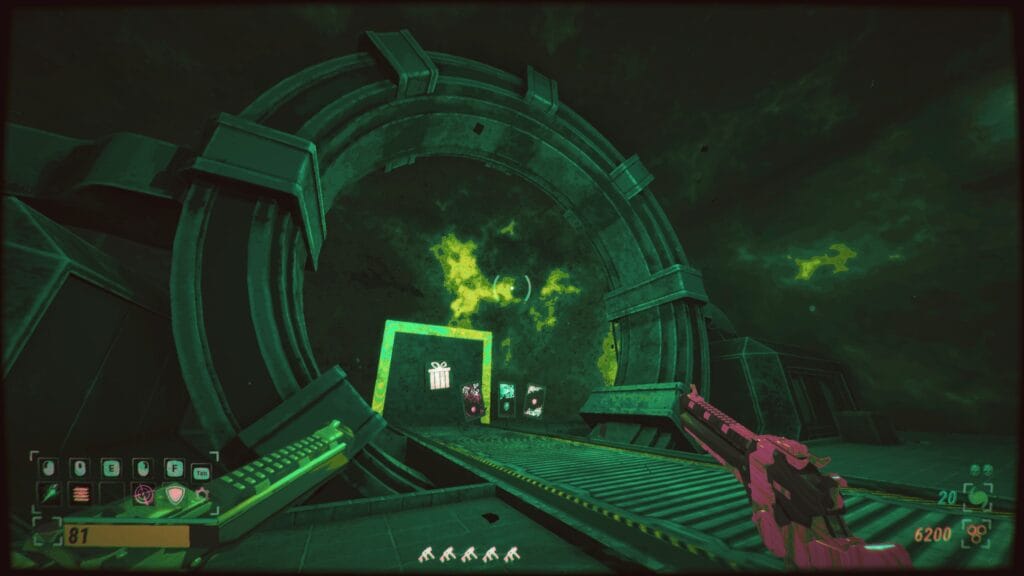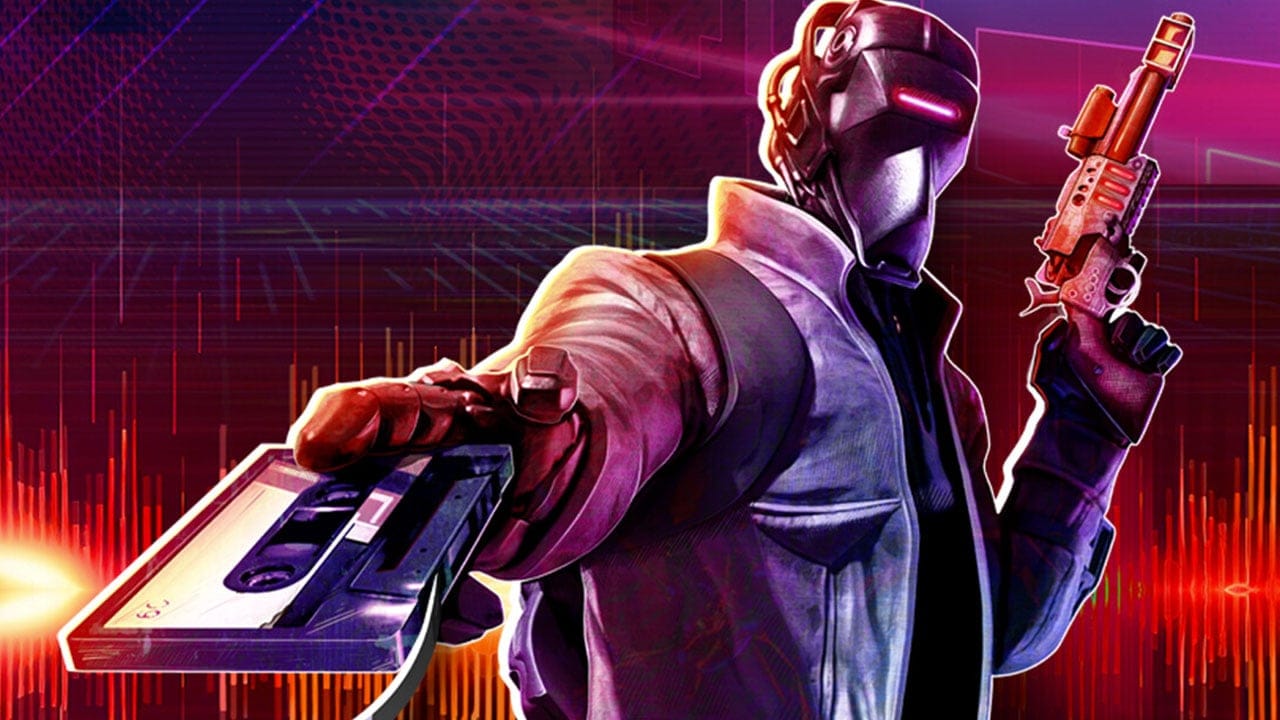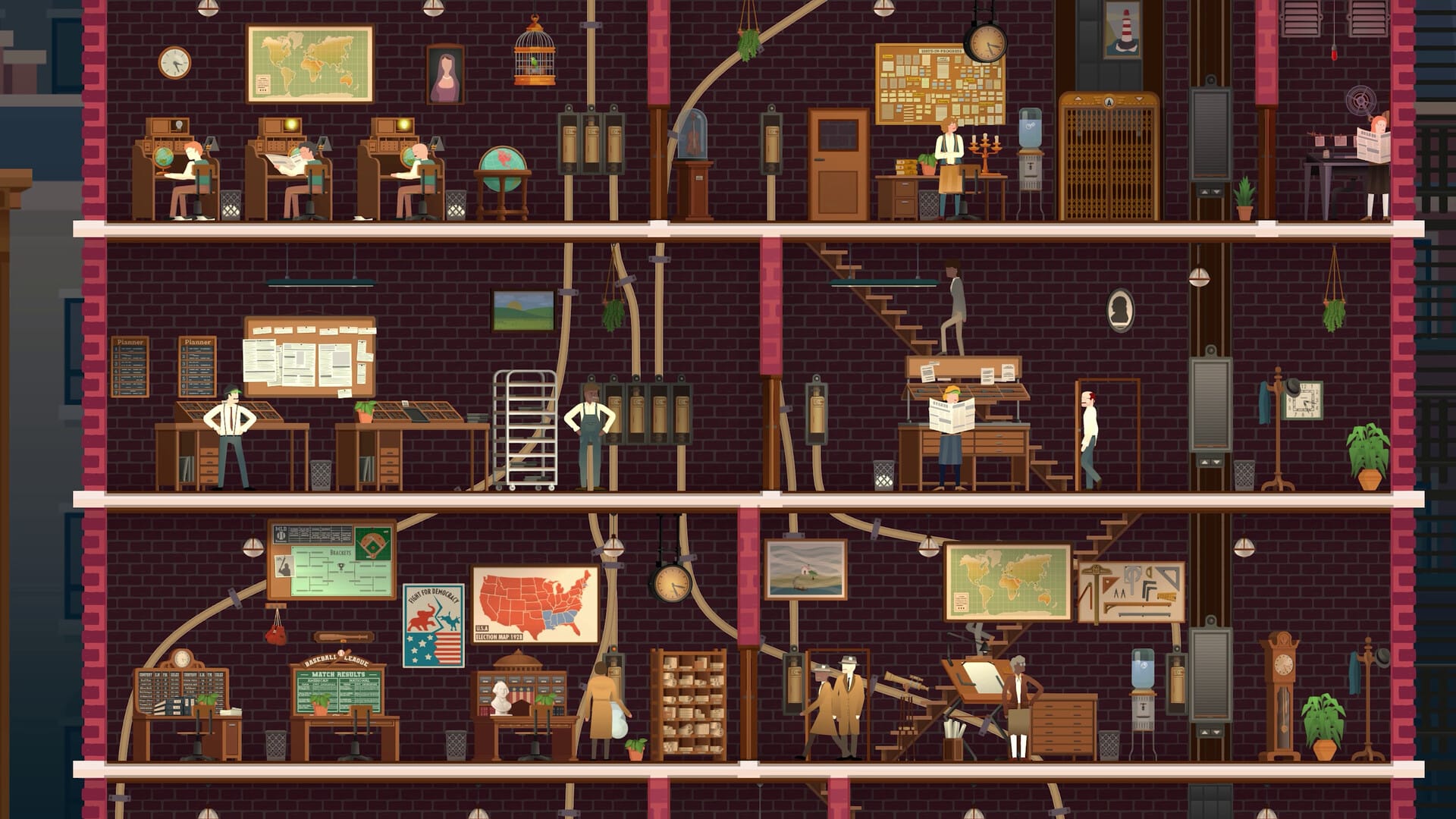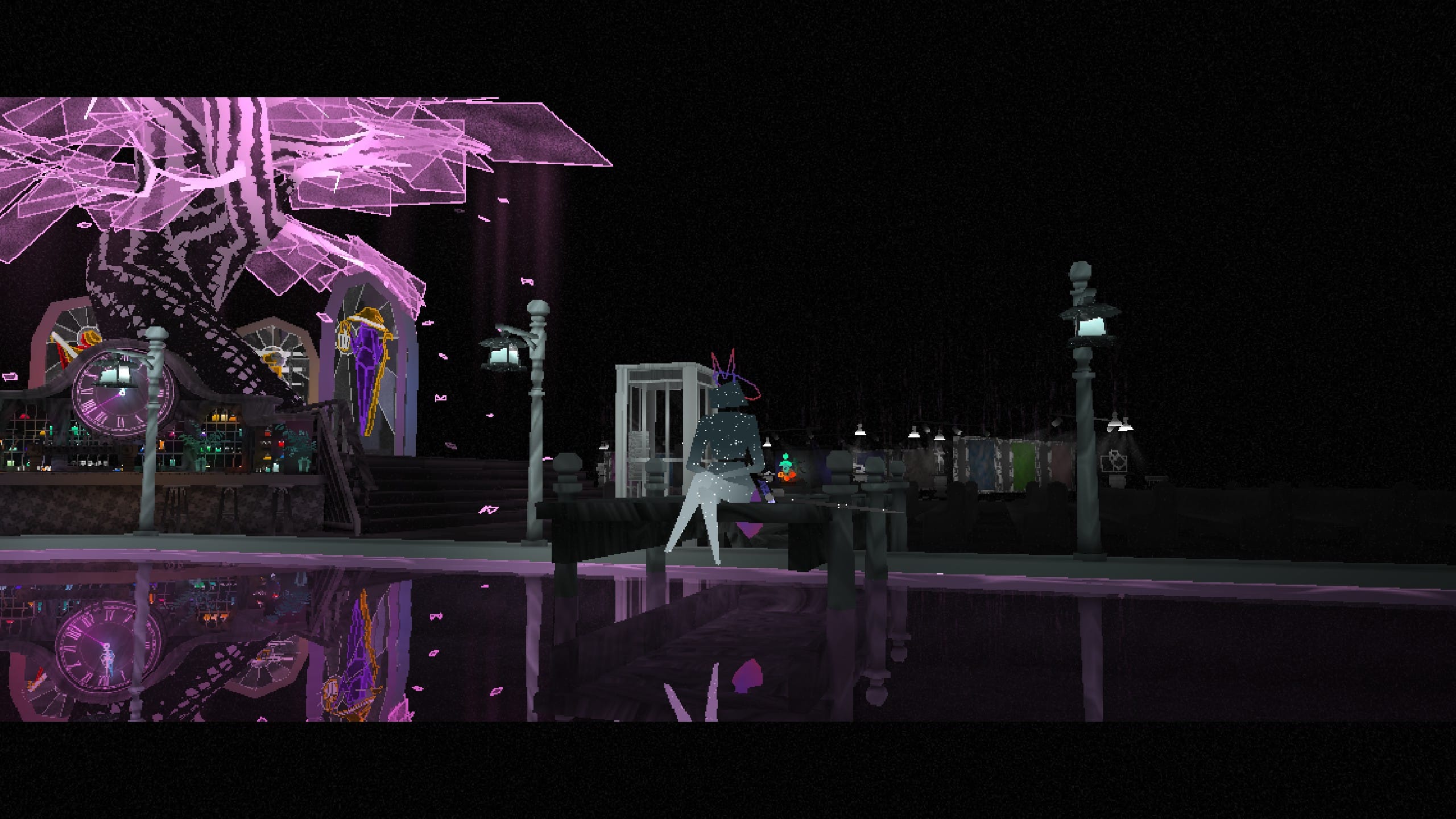Developed as a solo project by Simon Fredholm, Robobeat is a roguelike rhythm shooter with a cyberpunk theme and an EDM soundtrack. These elements are enough to give the game some degree of distinctiveness, but with a truly novel hook it does not manage to rise above its rivals in a small subgenre.
The player takes on the role of Ace, a robot bounty hunter on the hunt for a cybernetic arch-criminal. There is very little trace of this threadbare tale in the game itself, as Fredholm wisely gets gameplay moving as quickly as possible. Ace’s mission is structured in quite conventional roguelike terms. The game is organised into a number of visually distinct areas, with their own unique enemy types – these areas are subdivided into smaller segments, and end with a boss battle.
Ace must clear each segment of enemies, and then enter the next – possibly choosing between doors to select a desired reward currency. Periodically, Ace’s abilities can be upgraded by choosing between three randomly selected cards. These provide various enhancements to damage, mobility, or survivability and allow the gradual setup of a fairly distinctive build. For example, a player choosing many mobility cards will want to use Ace’s ability to slide and wall-jump as much as possible, to take advantage of speed bonuses and get the drop on foes.

Each zone has its own distinctive look and particular set of enemies
The list of familiar roguelike elements goes on, all competently executed. One of the currencies that Ace earns can be used to purchase permanent, meta enhancements which persist over multiple runs. These can include shops where new items can be purchased and storage lockers to make desirable weapons available again later.
The approach to weapons is one of the more gently unique aspects of Robobeat. At any given time, Ace is equipped with two guns or melee weapons – these can be different, or matched. Taking advantage of the unique features of any particular combination is key to success – for example, possessing a sword can mitigate the weaknesses of a long-range gun. Weapons also cycle at different rates as it relates to the beat – a pistol can fire twice for every blast from a shotgun.
Where Robobeat struggles is a familiar pitfall of rhythm shooters. Quite quickly, it can begin to feel that firing to the beat becomes monotonous. The frenetic action of the FPS becomes subordinated to the sometimes too rigid structure of the rhythm game. This creates a sense of simply going through the motions, rather than struggling satisfyingly with the game’s arenas. It doesn’t help that Robobeat has no means of increasing its intensity or providing thrilling feedback through its soundtrack.

Making wise decisions about upgrades is key to a lengthy run
There are other problems common to some arena-focused shooters like Ziggurat. The combat spaces in Robobeat are, on the whole, simply not very interesting. Many of them are mostly featureless boxes, which neither the player nor enemies can interact with or traverse in engaging ways. Fredholm has added rails in certain areas which the player can grind along, but these seldom seem worth the effort given Ace’s inherent mobility. Robobeat is also frontloaded with its most generic environments, which players will see over and over again because of the roguelike structure – it takes effort and dedication to see the game at its best, effort that many players will not want to put in.
In short, Robobeat meets the basic expectations for a game of its type. Its weapons, enemies, soundtrack, and level design are all adequate but it falls short due to its lack of a unique hook, or compelling reason to exist.





